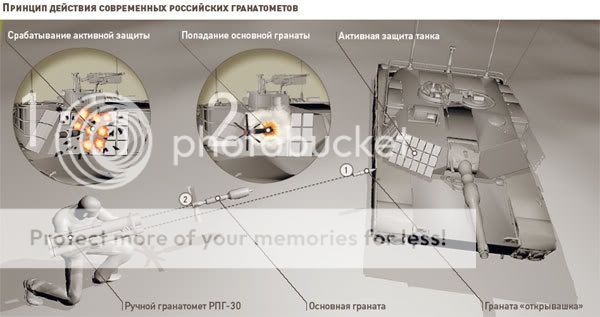BLACKEAGLE
ELITE MEMBER

- Joined
- May 9, 2007
- Messages
- 10,928
- Reaction score
- 2
- Country
- Location
The RPG-30 was unveiled in 2008 by the State Research and Production Enterprise, Bazalt as a modern anti-tank grenade launcher designed to address the threat of reactive armor and active protection systems on tanks. Active protection systems (APS) such as ARENA-E, Drozd and Trophy defeat anti-armour munitions by destroying them before they reach the target, the RPG-30 is an intended response to the introduction of these systems. The RPG-30 has cleared its testing program and is waiting to be included in the Russian state arms procurement program as of November 2008.
The RPG-30 shares a close resemblance with the RPG-27 in that it is a man-portable, disposable anti-tank rocket launcher with a single shot capacity. Unlike the RPG-27 however, there is a smaller diameter precursor round in addition to the main round. This precursor acts as a false target, tricking the target's active protection system into engaging it, allowing the main round a clear path to the target, while the APS is stuck in the 0.2-0.4 second delay needed to start its next engagement.

The RPG-30 shares a close resemblance with the RPG-27 in that it is a man-portable, disposable anti-tank rocket launcher with a single shot capacity. Unlike the RPG-27 however, there is a smaller diameter precursor round in addition to the main round. This precursor acts as a false target, tricking the target's active protection system into engaging it, allowing the main round a clear path to the target, while the APS is stuck in the 0.2-0.4 second delay needed to start its next engagement.

Thank you. Almost 80% of M-60 tanks were upgraded to Phoenix version, the rest are being upgraded.I never seen any fielded Phoenix tank. All its pics are from shows. Overall Phoenics looks on pair with Israeli Sabra upgrade + LEDS APS.
Al Hussein looks like they added armor only to turret front. I guess with this upgrade the turret front will be immune to overwhelming majority of the threats. But hull and turret sides remain vulnerable.



















